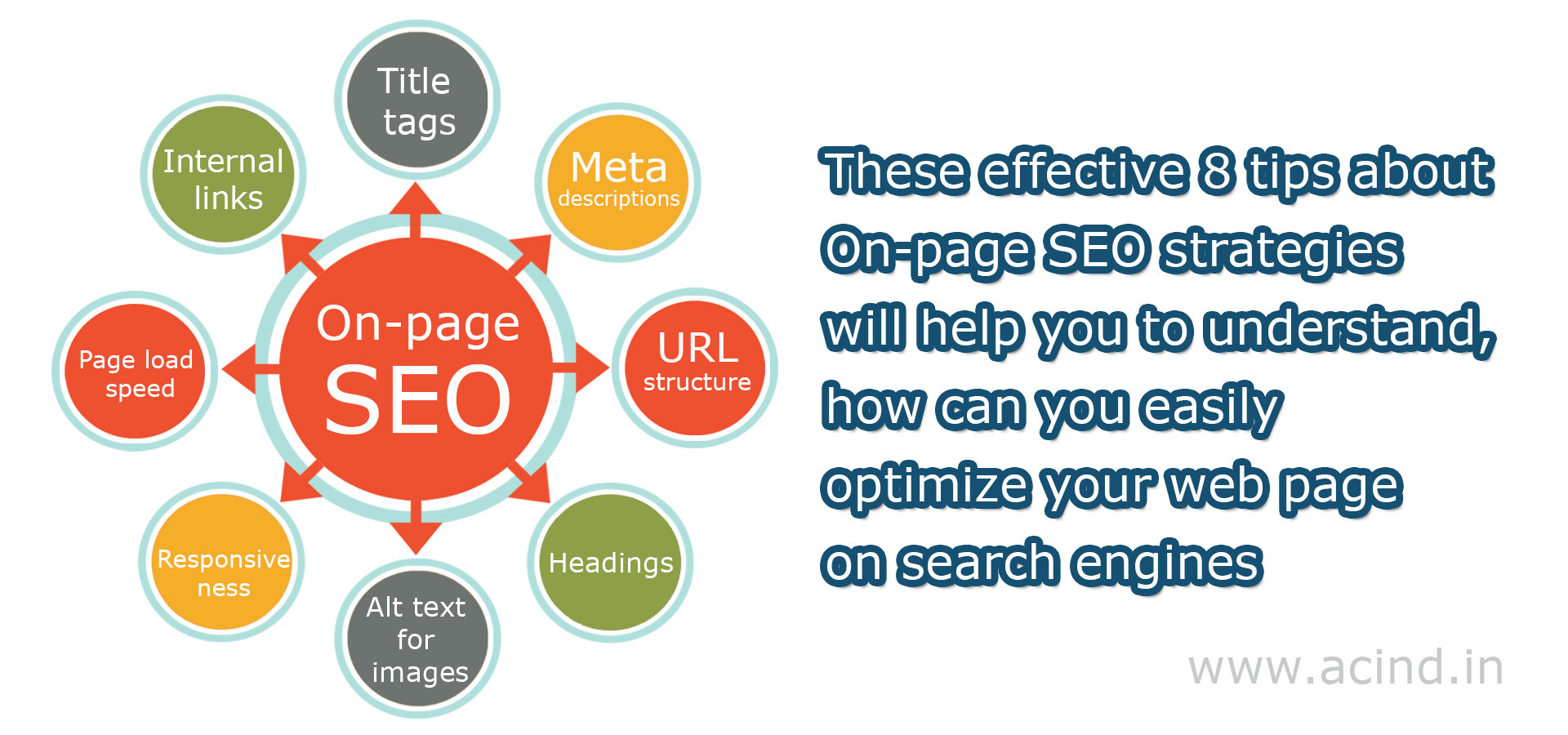8 Tips about On-page SEO strategies
These effective 8 tips about On-page SEO strategies will help you to understand, how can you easily optimize your web page on search engines

What is the definition of on-page SEO?
In one-word, on-page SEO strategies are the most important part of optimizing your web page on search engines.
For the best SEO practice, this following 8 On-page SEO strategies should everyone need to know.
- 1. Title tags.
- 2. Meta descriptions.
- 3. URL structure.
- 4. Headings.
- 5. Alt text for images.
- 6. Responsiveness.
- 7. Page load speed.
- 8. Internal links.
1. Title tags:
Title tags are HTML elements, it helps search engines to trace your webpage content. It's also like the heart of Onpage SEO.
Example:
<head>
<title> web design tips </title>
</head> Note: As per SEO experts instruction, every single webpage should have a different title-tags and it must not be above 60 characters long.
2. Meta descriptions:
A Meta-description is a short paragraph about related to the title tags and webpage content. A perfect meta description and related title tag help the search engine easily understand your webpage content.
Example:
<meta name="description" content="These effective web design tips will help you to understand proper web page stature">
Note: As per SEO experts instruction, every single webpage should have a different meta description and it must not be above 160 characters long.
3. URL structure:
Title tag related URL structure making in another important step to on-page SEO. This technique will earn an extra priority from Google for your different web pages.
Example:
example.com/technical-seo-strategy.php (✔)
example.com/page.php?technical_seo_strategy=18523 (✖)
4. Headings:
Remember, a content headline means - a completely clear and short description of your content. As per the SEO technique, you should have to use the H1 tag for every headline. To break up content, you can also use subheadings (H2 through H6) following the same best practices, but don’t repeat keywords throughout a post.
5. Alt text for images:
Alternative (alt-text) text, provides search engines perfect information about the Image. Alt-text should be specific and descriptive of the image content. An alt-text should not more than 125 characters long. Image alt-tags must have related to the title tag.
Example:
<img src="img/web-design-tips.jpg" alt="web design tips" title="web design tips">
6. Responsiveness:
Make sure your web page format is under-responsive design. A responsive design element that ensures your page will display properly on any device, including mobile devices and desktop ones. (You may install this app: Mobile responsive web design tester )
7. Page load speed:
Web page speed is another important factor for on-page SEO. Mainly page loading speed depends on your web design techniques or web coding. A poor or wrong web coding can increase your server response time. Server response time mainly depends on CSS coding, unnecessary jquery file, image size, and more other things. You may decrease your server response time with the help of the Google PageSpeed Insights tools.
8. Internal links:
Proper internal link building makes your site easy to understand for search engines and visitors. For good practice, each page on your site should link back to its category or subcategory page and the homepage. Always try to remove the broken link from your page.